Barnicarndy Graben, southern Canning Basin: stratigraphy defined by the Barnicarndy 1 stratigraphic well
Leon Normore A D , Peter W. Haines A , Lidena K. Carr B , Paul Henson B , Yijie Zhan A , Michael T. D. Wingate A , Yong Yi Zhen C , Yongjun Lu A , Sarah Martin A , David Kelsey A , Heidi Allen A and Imogen Fielding AA Geological Survey of Western Australia, Mineral House, 100 Plain Street, East Perth, WA 6004, Australia.
B Geoscience Australia, GPO Box 378, Canberra, ACT 2601, Australia.
C Geological Survey of New South Wales, 947–953 Londonderry Road, Londonderry, NSW 2753, Australia.
D Corresponding author. Email: leon.normore@dmirs.wa.gov.au
The APPEA Journal 61(1) 224-235 https://doi.org/10.1071/AJ20160
Submitted: 22 February 2021 Accepted: 10 March 2021 Published: 2 July 2021
Abstract
Funded by Geoscience Australia’s Exploring for the Future initiative and operated by the Geological Survey of Western Australia, the Waukarlycarly 1 deep stratigraphic drillhole was designed to investigate the geology of the little-known Waukarlycarly Embayment and assess the petroleum, mineral, groundwater and CO2 storage potential of the area. Based on consultation with the Western Desert Lands Aboriginal Corporation on the cultural significance of the name, Waukarlycarly, it has been agreed to change the name of the well to Barnicarndy 1 and the tectonic subdivision to the Barnicarndy Graben. This and all future publications will now refer to the Barnicarndy 1 stratigraphic drillhole (previously Waukarlycarly 1) and the Barnicarndy Graben (previously Waukarlycarly Embayment). Drilling commenced on 1 September 2019 and reached a total depth (TD) of 2680.53 m on 30 November 2019, recovering more than 2 km of continuous core. The cored interval extended from 580 m to TD in Neoproterozoic Yeneena Basin dolostone, which was unconformably overlain by a thick, lower Canning Basin Ordovician stratigraphy, including richly fossiliferous marine mudstones with common volcanic ash beds. A major unconformity is located at the top of the Ordovician section where it is overlain by sandstones and muddy diamictites of the Carboniferous–Permian Grant Group, followed by a Cenozoic succession near surface. Ditch cuttings were collected from surface to 580 m at 3 m intervals. The pre-Grant Group Paleozoic succession is unique within the Canning Basin, indicating that the Barnicarndy Graben’s depositional history is markedly different when compared with adjacent structural subdivisions, such as the Munro Arch and Kidson Sub-basin. Detrital zircon geochronology, biostratigraphy and borehole imaging interpretation assisted in the definition of two new geological units within the Ordovician stratigraphy of Barnicarndy 1: the Yapukarninjarra and Barnicarndy formations. Preliminary routine core analysis data indicates the potential for CO2 storage within the Barnicarndy Formation beneath a Grant Group seal. The well also provides new insights into the structural interpretation of the Barnicarndy Graben.
Keywords: Barnicarndy Graben, Canning Basin, Ordovician, Yeneena Basin, Neoproterozoic, carbon sequestration.
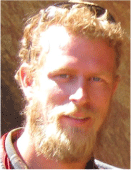
For the past eight years, Leon Normore has been a Senior Geologist in the Geological Survey and Resource Strategy Division, Department of Mines, Industry Regulation and Safety, focussed primarily on the Canning Basin of Western Australia. Leon’s previous work includes petroleum and mineral exploration in Canada and the United States, as well as regional mapping with the Geological Survey of Newfoundland and Labrador. |

Peter Haines holds Honours and PhD degrees in Geology from the University of Adelaide. He has previously held positions at the Northern Territory Geological Survey and Universities of South Australia, Adelaide and Tasmania. He joined GSWA in 2003 and currently holds the title of Basins Custodian within the Energy Geoscience and Carbon Strategy Branch. He is a member of PESA and the Geological Society of Australia (GSA). |
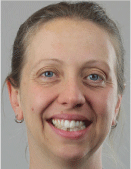
Lidena K. Carr is a Geoscientist for the Onshore Energy Systems program within the Resources Division at Geoscience Australia (GA). She graduated from the Australian National University (ANU), majoring in Geology and Human Ecology, with a BA/BSc (Hons) in 2004 and began working as a technical officer at the Research School of Earth Sciences (ANU). In 2007, she joined GA with the then ACRES (satellite imagery). In 2009, she moved to the then Onshore Energy and Mineral Division to work as a Seismic Interpreter and Basin Analyst. Currently, she is the acting Director of the Onshore Energy Systems directorate working on the Exploring for the Future program. She is member of PESA and GSA. |
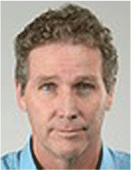
Paul A. Henson graduated from the University of Tasmania and is currently the Director of the Onshore Energy Systems Section at GA. He has extensive experience in the minerals sector, working on mineral systems in Proterozoic and Archaean terranes. Since 2010, he led the Australian Governments’ onshore carbon storage program, undertaking deep onshore drilling and seismic acquisition programs in collaboration with the states and industry. In addition, he now manages the Exploring for the Future - Energy Program, leading a team of researchers to acquire new pre-competitive geoscientific data to improve our understanding of the oil and gas potential of Australian onshore basins. |

Yijie Zhan graduated from China University of Geoscience (Beijing) with a BSc in 2005. He has worked on structural interpretation, fracture detection and reservoir modelling in various basins. He has published in English and Chinese on azimuthal anisotropy, forward modelling and characterisation of gas-bearing volcanoclastic and conventional reservoirs. He joined the GSWA’s Basin and Energy Geoscience group as Senior Geophysicist in 2011, and he is a member of PESA. |

Michael Wingate is the manager of Geochronology and Geochemistry at GSWA. He completed a PhD in ion microprobe geochronology and paleomagnetism at ANU in 1997. Following several postdoctoral research positions, including an Australian Research Fellowship, in the Tectonics Special Research Centre at the University of Western Australia, he joined GSWA in 2005. His main research interests include integration of geochronology and isotope geology with regional geoscience datasets, and geochronology of dyke swarms and large igneous provinces. |

Yong Yi Zhen is currently the State Palaeontologist with the Geological Survey of New South Wales. He obtained a MSc from the Beijing University in 1982 and a PhD from the University of Queensland in 1991 after a biostratigraphic and palaeontological study of the Devonian rugose corals from the Burdekin Basin of North Queensland. His main research interests are Late Cambrian–Devonian conodonts, corals and stromatoporoids and their biostratigraphic applications and palaeobiogeography. In the last 25 years, he has actively worked on Ordovician conodonts from Australian, New Zealand, Antarctica, Southeast Asia, Europe and North America, utilising their biostratigraphical precision to directly support the regional mapping in New South Wales and other parts of Australia and to correlate the Ordovician system in a regional and global context. He has a record of over 110 peer reviewed publications, along with many non-refereed technical reports, field guides, abstracts of conference presentations, popular science articles and translations. |

Dr. Yongjun Lu is Senior Geochronologist Isotope Geologist at GSWA, Associate Investigator of the Australian Research Council Centre of Excellence for Core to Crust Fluid Systems and Adjunct Senior Research Fellow at Centre for Exploration Targeting, School of Earth Sciences, University of Western Australia. His research ranges from Archean cratons in Western Australia to Cenozoic porphyry copper systems in Tibet. Yongjun has over 15 years’ geological experience, extensive collaboration with industry, government and academia, advanced understanding of mineral system with the later highlighted by being the 52nd recipient of the Waldemar Lindgren Award of the Society of Economic Geologists. |
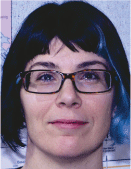
Dr. Sarah Martin has worked for GSWA since 2009. She holds the position of Palaeontologist within the State Geoscience Branch and was previously a Senior Geologist in the Energy Geoscience and Carbon Strategy Branch. Sarah’s expertise lies in Mesozoic and Cenozoic invertebrate paleontology and biostratigraphy, having worked extensively on projects in the Perth and Eucla basins. In addition, Sarah curates the GSWA paleontology collection and manages aspects of State Geoheritage. She is a member of GSA (and its special interest group, Australasian Paleontologists), the Palaeontological Association and the International Palaeoentomological Society. |

David Kelsey holds a PhD from the University of Melbourne. He has previously worked at the University of Adelaide and joined the GSWA in 2019 as a Senior Geologist, working on Proterozoic geology of the Paterson, Arunta and Albany-Fraser Orogens. |
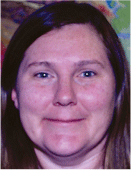
Heidi Allen joined GSWA in 2007. She holds the position of Paleontologist within the State Geoscience Branch; previously she was Senior Geologist in the Energy Geoscience and Carbon Strategy branch. Heidi has project and field experience in several Western Australian basins, including the Amadeus, Murraba, Officer, Canning, Ashburton, Hamersley, Southern Carnarvon and northern Perth basins. She has more than 12 years’ project experience in Neoproterozoic paleontology, biostratigraphy, stratigraphy and petroleum potential of the Centralian Superbasin. She more recently expanded her microbialite work into older units and continues to work on Paleozoic paleontology projects. She is a member of GSA and a current committee member and secretary for the special interest group, Australasian Paleontologists. |
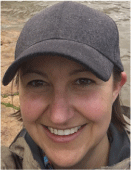
Imogen Fielding completed Bachelor of Science (honours) in geology at Macquarie University in 2003. Following this she worked in the mining industry as a gold exploration geologist for 12 years before undertaking a PhD at Curtin University. Since completion of her PhD in 2018, she has been working at GSWA as a phosphate geochronologist. |
References
Backhouse, J. (2020). Report BB568 Waukarlycarly 1: palynology of 7 samples, 4p, unpublished report available on WAPIMS (https://wapims.dmp.wa.gov.au/wapims).Backhouse, J., and Mory, A. J. (2020). Mid-Carboniferous – Lower Permian palynology and stratigraphy, Canning Basin, Western Australia: Geological Survey of Western Australia, Report 207, 148p.
Beard, J. S. (2005). Drainage evolution in the Lake Disappointment Catchment, Western Australia – a discussion. Journal of the Royal Society of Western Australia 88, 57–64.
Core Laboratories Australia Pty Ltd (2020). Routine core analysis report, Waukarlycarly 1, Western Australia, Prepared for Government of Western Australia, Department of Mines, Industry Regulation and Safety, May 2020, Core Laboratories file: 202000831, 167p, unpublished report available on WAPIMS (https://wapims.dmp.wa.gov.au/wapims).
Dent, L. M., Normore, L. S., and Martin, S. K. (2021). Reference section, revised stratigraphy and facies analysis of the Ordovician Nambeet Formation, Canning Basin, Western Australia, Report 211, 82p.
Doublier, M. P., Gessner, K., Johnson, S. P., Kelsey, D. E., Haines, P. W., Howard, H. M., Chopping, R., Smithies, R. H., Hickman, A. H., Martin, D.McB., Southby, C., Champion, D. C., Huston, D. L., Calvert, A. J., Gorczyk, W., Kohanpour, F., Moro, P., Costelloe, R., Fomin, T., Yuan H. and Kennett, B. L. N. (2020). Basement interpretation of the Kidson seismic line 18GA-KB1: Geological Survey of Western Australia, non-series map.
Frogtech Geoscience (2017). 2017 Canning Basin SEEBASE study and GIS data package: Geological Survey of Western Australia, Report 182, 297p.
Forbes, A., Sullivan, N., Edwards, D., and Grosjean, E. (2020). Report CAu50017 Chemostratigraphy of Waukarlycarly 1, Canning Basin, Western Australia, prepared for Geoscience Australia, August 2020, 36p, unpublished report available on WAPIMS (https://wapims.dmp.wa.gov.au/wapims).
Ghori, K. A. R. (2011). Petroleum geochemistry of the Canning Basin, Western Australia: basic analytical data 2005–10: Geological Survey of Western Australia, Record 2011/13, 80p.
Haines, P. W., Wingate, M. T. D., and Kirkland, C. L. (2013). Detrital zircon U-Pb ages from the Paleozoic of the Canning and Officer Basins, Western Australia: implications for provenance and interbasin connections, in The Sedimentary Basins of Western Australia edited by M. Keep and S.J. Moss: West Australian Basins Symposium, Perth, Western Australia, 18–21 August 2013: Petroleum Exploration Society of Australia, 19p.
Haines, P. W., Wingate, M. T. D., Maidment, D. W., and Zhan, Y. (2018a). Initiation of the Canning Basin: extensional magmatism in the middle Cambrian? Australian Geoscience Council Convention, Adelaide Convention Centre, Big Issues and Ideas in Geoscience, 14–18 October 2018, p. 146.
Haines, P. W., Wingate, M. T. D., Zhan, Y., and Maidment, D. W. (2018b). Looking beneath the Canning basin: new insight from geochronology, seismic and potential-field data Craton, in GSWA 2018 extended abstracts: Geological Survey of Western Australia, Record 2018/2, pp. 30–33.
Hancock, E. A., Normore, L., and Wawryk, M. J. (2020a). Drillhole Waukarlycarly 1: Hyperspectral logging of cuttings: Geological Survey of Western Australia, HyLogger™ record 2020/7, 6p, unpublished report available on WAPIMS (https://wapims.dmp.wa.gov.au/wapims).
Hancock, E. A., Normore, L., and Wawryk, M. J. (2020b). Drillhole Waukarlycarly 1: Hyperspectral logging of diamond core: Geological Survey of Western Australia, HyLogger™ record 2020/6, 8p, unpublished report available on WAPIMS (https://wapims.dmp.wa.gov.au/wapims).
Hannaford, C. (2019). Palynological Analysis of Waukarlycarly 1, Canning Basin, Western Australia, unpublished report available on WAPIMS (https://wapims.dmp.wa.gov.au/wapims).
Heinrich, J. J., Herzog, H. J., and Reiner, D. M. (2004). Environmental Assessment of Geologic Storage of CO2, MIT LFEE 2003-002, Massachusetts Institute of Technology Laboratory for Energy and the Environment, Cambridge, Massachusetts, 8p.
Hocking, R. M., Mory, A. J., and Williams, I. R. (1994). An atlas of Neoproterozoic and Phanerozoic basins of Western Australia. In ‘The sedimentary basins of Western Australia’ (Eds PC Purcell and RR Purcell) pp. 21–43. Petroleum Exploration Society of Australia, Western Australian Branch, Perth, Western Australia.
Kitto, P. L. (1978). Final Report on the Barnicarndy Coal Project, Peko-Wallsend Operations Limited, Geopeko Division, S1456, A1, Vol. 1, 189 p, unpublished report available on WAMEX (http://dmp.wa.gov.au/WAMEX-Minerals-Exploration-1476.aspx).
Normore, L. S., and Rapaic, M. (2020). Waukarlycarly 1 basic data well completion report: Geological Survey of Western Australia, Report 206, 14p.
Normore, L., Zhen, Y. Y., Dent, L. M., Crowley, J. L., Percival, I. G., and Wingate, M. T. D. (2018). Early Ordovician CA-IDTIMS zircon dating and conodont biostratigraphy, Canning Basin, Western Australia. Australian Journal of Earth Sciences 65, 61–73.
| Early Ordovician CA-IDTIMS zircon dating and conodont biostratigraphy, Canning Basin, Western Australia.Crossref | GoogleScholarGoogle Scholar |
Piane, C. D., and Dewhurst, D. N. (2020). Petrography and seal capacity of a diamictite from Waukarlycarly 1, report for Geoscience Australia, 23p, unpublished report available on WAPIMS (https://wapims.dmp.wa.gov.au/wapims).
Ranasinghe, S. P., and Crosdale, P. (2020). Report on source rock type, maturation levels and hydrocarbon potential of a suite of samples from Waukarlycarly 1 in the Canning Basin, Western Australia, report prepared for Geoscience Australia, 25p.
Traves, D. M., Casey, V. N., and Wells, A. T. (1956). The Geology of the South-Western Canning Basin, Western Australia. Bureau of Mineral Resources, Australia. Report 29.
Walker, M. (2020). Petrophysical Evaluation, Waukarlycarly 1 Stratigraphic Well, Canning Basin Western Australia, 39p, unpublished report available on WAPIMS (https://wapims.dmp.wa.gov.au/wapims).
Wang, L., Edwards, D., Bailey, A., Carr, L., Boreham, C., Grosjean, E., Normore, L., Anderson, J., Jarrett, A., MacFarlane, S., Southby, C., Carson, C., Khider, K., Henson, P., Haines, P., and Walker, M. (2021). Petrophysical and geochemical interpretations of well logs from the pre-Carboniferous succession in Barnicarndy 1, Canning Basin, Western Australia. The APPEA Journal 61, 253–270.
| Petrophysical and geochemical interpretations of well logs from the pre-Carboniferous succession in Barnicarndy 1, Canning Basin, Western Australia.Crossref | GoogleScholarGoogle Scholar |
Wilson, A. and Thrane, L. (2020). Report DM-20-1, Waukarlycarly 1, Structural and sedimentological analysis of an Acoustic Televiewer borehole image log, Onshore Canning Basin, Western Australia, 117p, unpublished report available on WAPIMS (https://wapims.dmp.wa.gov.au/wapims).
Wingate, M. T. D., Lu, Y., Fielding, I. O. H., Normore, L. S. and Haines, P. W. (2021a). 237994: siltstone, Barnicarndy 1; Geochronology Record 1739: Geological Survey of Western Australia, 8p.
Wingate, M. T. D., Lu, Y., Fielding, I. O. H., Normore, L. S. and Haines, P. W. (2021b). 237996: quartz sandstone, Barnicarndy 1; Geochronology Record 1741: Geological Survey of Western Australia, 7p.
Wingate, M. T. D., Lu, Y., Fielding, I. O. H., Normore, L. S., and Haines, P. W. (2021c). 237998: quartz sandstone, Barnicarndy 1; Geochronology Record 1743: Geological Survey of Western Australia, 8p.
Zhan, Y. (2021a). Kidson Sub-Basin Seismic Survey – A Panorama of the southern Canning Basin. Geological Survey of Western Australia, Report 216. In press.
Zhan, Y. (2021b). Velocity anomalies and out-of-plane reflections in Barnicarndy 1, Canning Basin. The APPEA Journal 61, 271–290.
| Velocity anomalies and out-of-plane reflections in Barnicarndy 1, Canning Basin.Crossref | GoogleScholarGoogle Scholar |
Zhen, Y. Y., Nicoll, R. S., Normore, L. S., Percival, I. G., Laurie, J. R., and Dent, L. M. (2020). Ordovician conodont biostratigraphy of the Willara Formation in the Canning Basin, Western Australia. Palaeoworld 2020, 1–29.
| Ordovician conodont biostratigraphy of the Willara Formation in the Canning Basin, Western Australia.Crossref | GoogleScholarGoogle Scholar |


